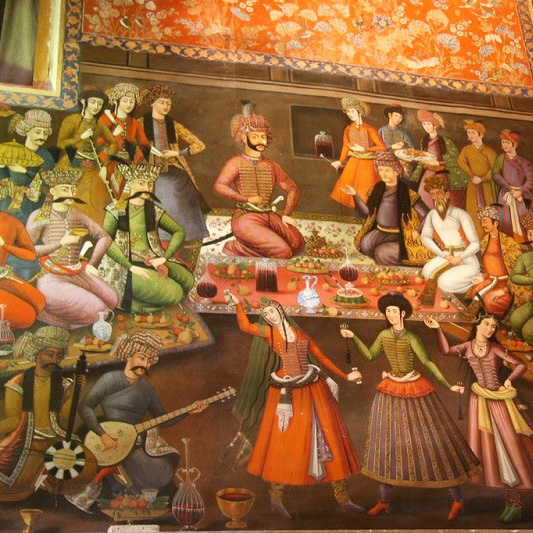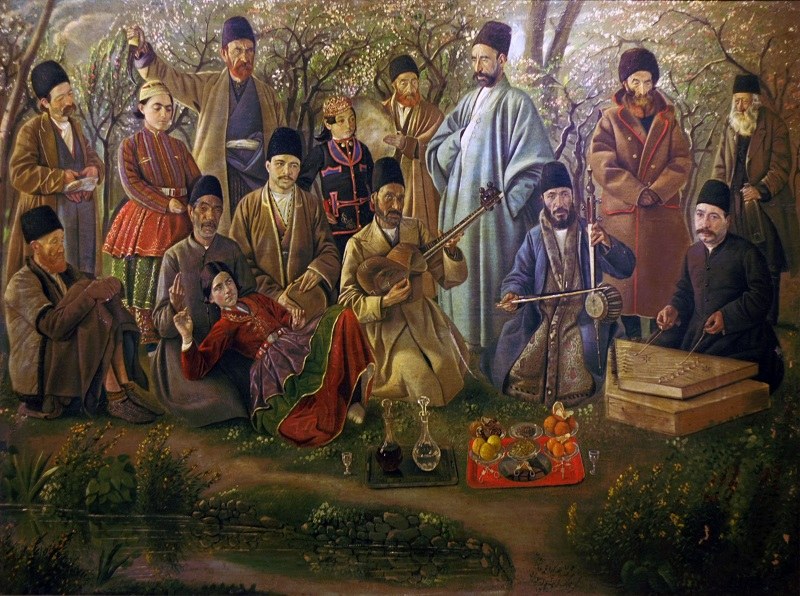
Persian Traditional Music
Dec 08 - 2021

Before introducing Persian traditional music, it’s important to consider certain facts. The music of every nation is like a mirror where we can see the social situation, the change, and the decline of society. Fine arts represent the emotions and the morals of people and nations and as the nations have different preferences, their arts are different from each other.
The original Persian music, also known as Persian traditional music and Persian classical music, includes Dastgah (musical modal system), melody, and Avaz. This kind of music has existed before Christendom and reached us mainly by word-of-mouth. The more enjoyable and easier parts have remained up until now.
Persian music influenced the music of the major parts of Central Asia, Afghanistan, Pakistan, Azerbaijan, Armenia, Turkey, and Greece. Also, each one of them has also contributed to the formation of this music. Barbod, Nagisa (Nakisa), and Ramtin are famous Persian musicians in ancient Iran.
Radif (meaning order in Persian, a collection of many old melodic figures) was inscribed as the first independent Iranian legacy in the Intangible World Heritage List in October 2009.
The carvings on the ancient cave walls show Iranians interest in music since the earliest times. Traditional Iranian music, as mentioned in the books, has influenced world music. The basis of the new European musical note is according to the principles of Mohammad Farabi, a great Iranian scientist and musician.
The Persian Traditional Music of Iran is a collection of songs and tunes created over the centuries in this country and reflects the morals of Iranians. On the one hand, the elegance and special form of Persian music persuade listeners to think and reach the immaterial world. On the other hand, the passion and the beat of this music have roots in the ancient and epic spirit of Iranians, which conducts the listener to move and make efforts.
Traditional Persian music is composed of twelve sets. Among them, seven sets are more independent and are called Dastgah. The five other sets that are dependent come from Dastgahs, which are known as Avaz. In addition to the seven Dastgah and five Avaz, 228 Gushehs are the models of musicians and singers.

There could be two major eras during which Iranian music has developed.
The music artworks of prominent Iranian scholars such as Avicenna, Farabi, Qutb al-Din Shirazi, and Abdul Qaher Maraqe’i show that Iranian music has had a scientific aspect until the mid-fifteenth century, but after that, due to the specific social and religious situation in Iran, music was not duly attended to. In this period, no one created significant work in music and the artists were discouraged.
This situation continued until the end of the Safavid era, whose government was based on strict religious ideas. Due to the anarchy following the fall of the Safavids, the situation of music was not yet significant in the Afsharid era.
Of course, historical evidence proves that Nader Shah was interested in musicians, but the music mostly played during this period was not original and traditional and had a dominant purpose of recreation. In the Zand period, when there were more public safety and welfare in Iran, people paid more attention to music again. Mushtaq Ali Shah and Parikhan are prominent music scholars of this period.
In the Qajar era, music developed in various aspects, including religion. Among the artists of this period, we can mention Seyed Ahmad Khan. He was the first singer to record his vocals on the gramophone. Qoli Khan is the other artist who performed Taziyeh (Iranian passion play) and, in addition, sang Avaz-e Dashti.
After the establishment of the Academy of Sciences (Dar ul-Funun) and the recruitment of European teachers and trainers of music, Iranian music got a theoretical and scientific form. Dar ul-Funun Publication published the theoretical courses of music taught by European professors in two languages, French and Persian.
The next period of Iranian music is the modern era. In the Pahlavi era, the foundations of western culture were introduced to Persian music and new forms of music were born. The distance between the people and the traditional music increased to the extent that in the early 1960s, people forgot the traditional Persian music.
According to the musicians, Reza Shah preferred the national music of Iran to European music but believed that European music is better for the country’s progress. Reza Shah changed the musical systems, and this led to the creation of a lot of military music in his era.